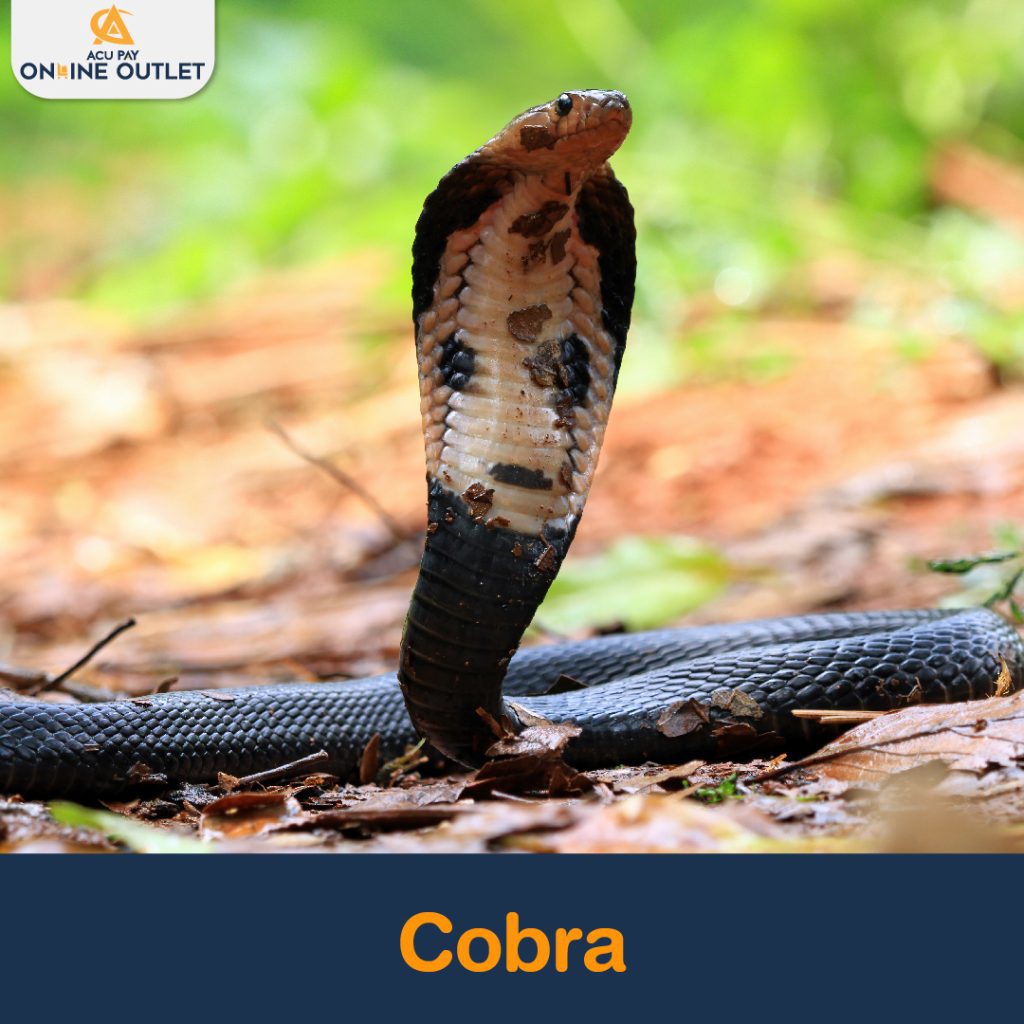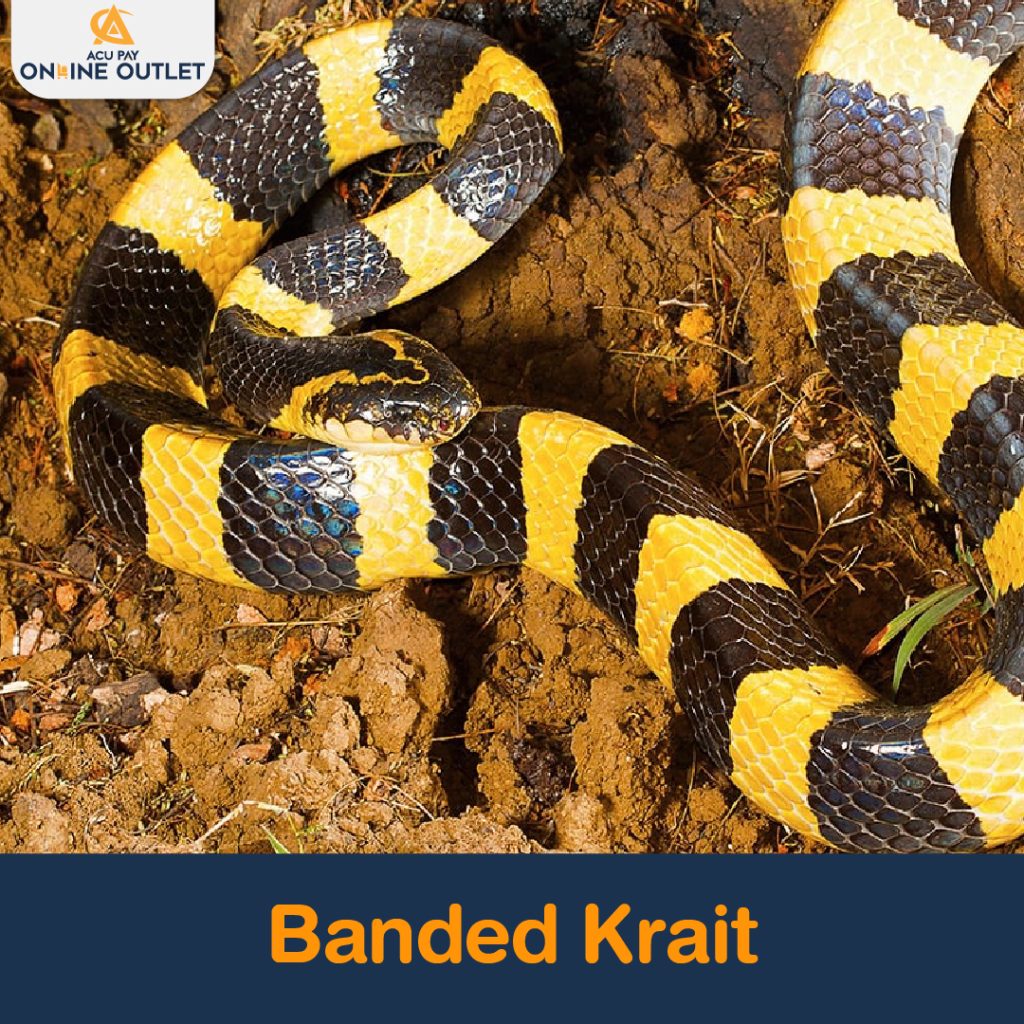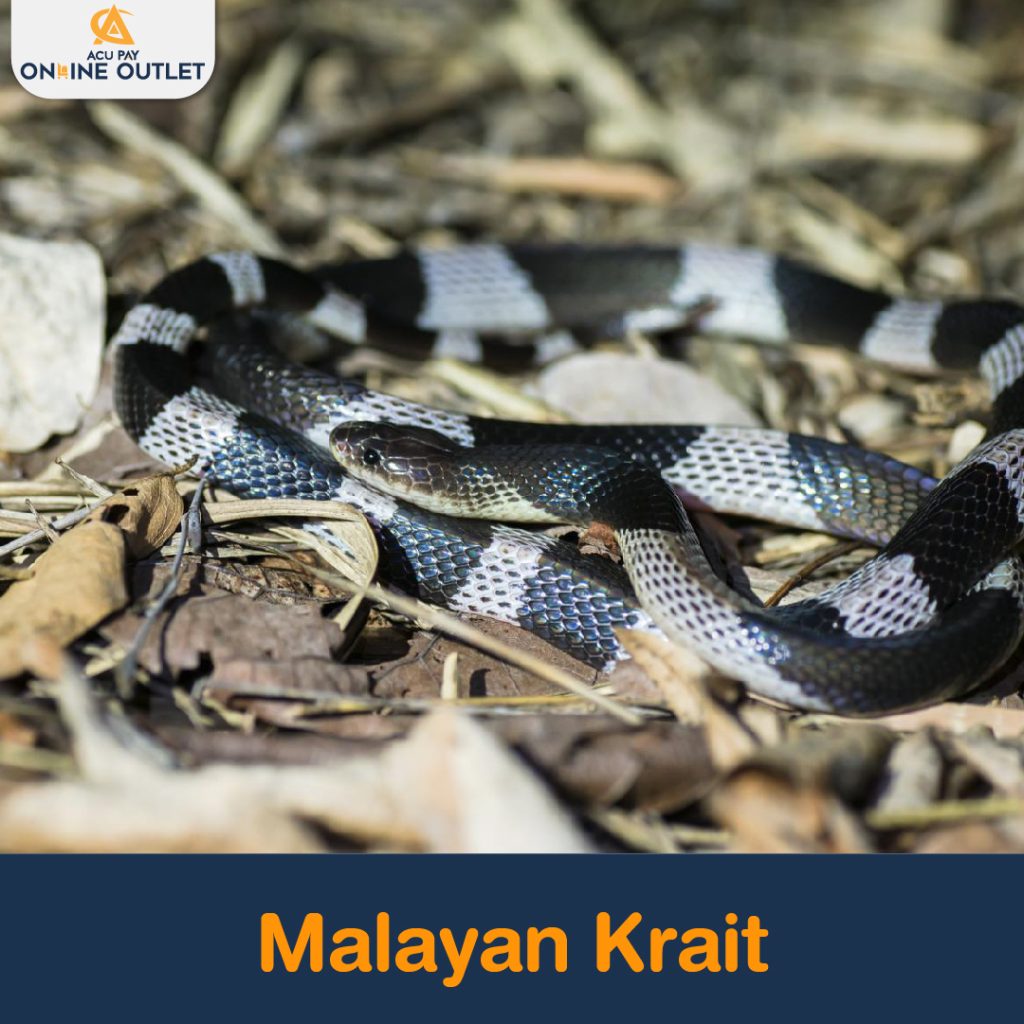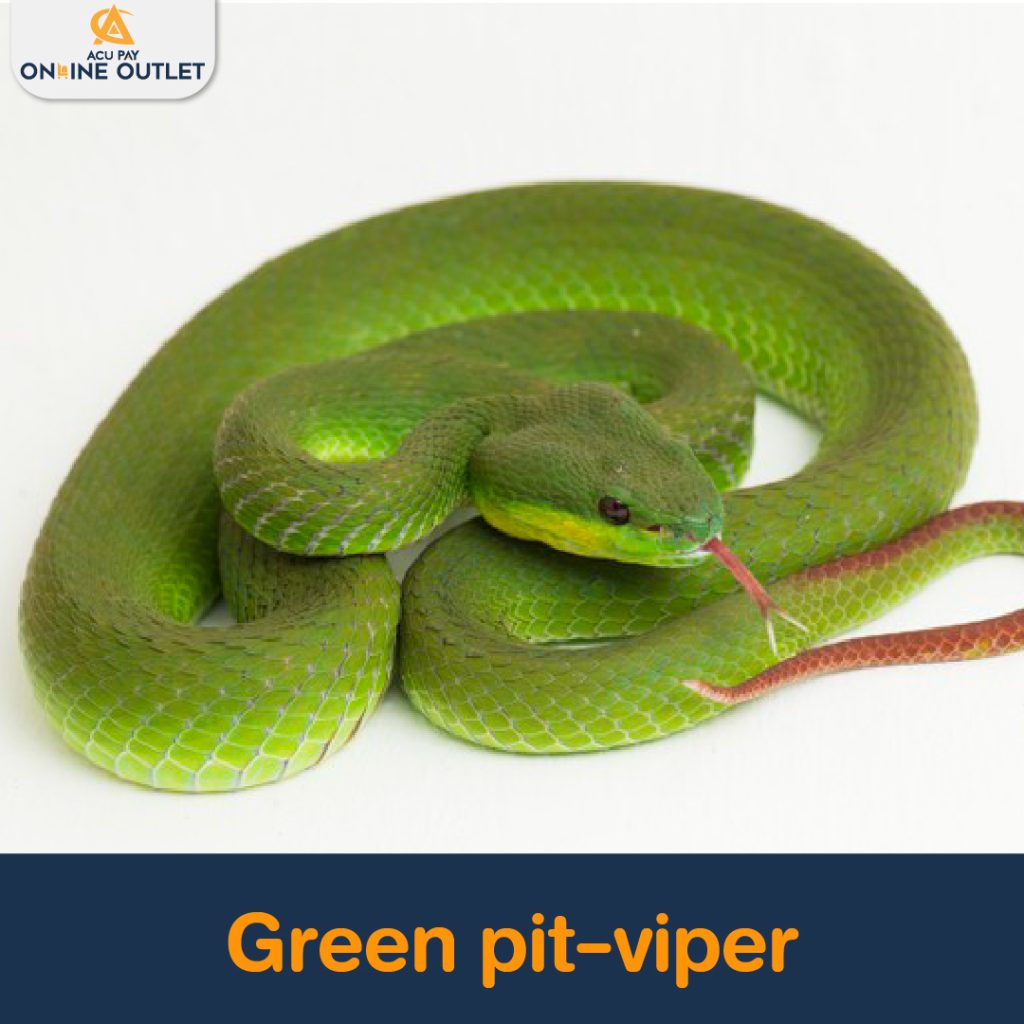

In addition to the outer appearance of snakes to differentiate vipers and non-venomous snakes, their nature is another factor to tell these two types of snakes apart. Normally, vipers will fight when they are frightened or angry, while the non-venomous snakes will be especially fierce during the breeding season and more fierce to people.
The bite marks from vipers and non-venomous snakes are different. If you are bitten by a viper, there will be 2 fang marks on the bitten area. The venom of a snake penetrates the skin, mucous membrane, or eyes of the person who has been bitten. The venom destroys various body systems which are divided into 4 groups: tissue, blood, nerves, and muscles. The person who is bitten will experience pain, swelling, and redness in the bitten area, difficult breathing, etc. It can also lead to unconsciousness or death.


A cobra is a snake that goes out for food at night on the ground. It likes to live in termites, fields, or areas with high humidity. Its body is about 100-180 centimeters long, its color is light to dark brown, light yellow, or black. When it is frightened or wants to threaten the enemy, cobras often make a loud threatening sound, spewing air through the nostrils and spreading the skin behind the neck called “cobra hood” It spreads its hood by lifting the head and neck. There is a black-and-white ring pattern in the middle on the back of the neck.

The king cobra is a snake that often lives in dense forests and near water sources. It resembles a cobra but is larger. It is about 200-540 centimeters long, found in all parts of Thailand. It has a large round head. When disturbed, the king cobra spreads out its hood, just like a cobra, but the king cobra’s hood is narrower than the cobra hood. It will make a threatening sound similar to a cobra. It is a snake with mostly reddish-brown green color. There are also other colors as well depending on the habitat. The belly of the king cobra is yellow and almost white. Under its neck is usually red or orange. In addition, there is one more distinctive feature which is a pair of “occipital scales” on the back of the head top scales.

Banded Krait is a snake that eats at night. It is slow during the day. It is found mostly in India and Bangladesh, but it can be found in all regions of Thailand as well. It likes to live mainly in lowlands, fields, and mangrove forests. It is about 100-180 centimeters long, and some may be up to 200 centimeters long. Males are relatively smaller than females. The body is alternately black and yellow, with the color of the abdomen rather faded than the upper part. It has a high-raised spine which is clearly seen as a triangle.

Malayan Krait is a snake that eats at night, is more agile and its venom is stronger than a Banded Krait. It usually lives on the ground near water sources with high humidity. The body is about 100-150 centimeters long. It looks quite round. The body is alternately white and black, with no clear spine. The white scales may be mixed with black scales. The head is black and gray, the abdomen is white, and the tail is long and pointed.

Siamese Russell’s viper is a snake that eats at night. It usually lives in burrows, rock crevices, bushes, fields, and dry places. When shocked or disturbed, before attacking the enemy, it often curls into a circle and makes threatening sounds like cats or the sound of a leaking car tire. Although the body looks a little unwieldy because it is quite fat and short with a length of about 90-150 centimeters, this is not a problem because it attacks fairly quickly. The head is triangular with a dark brown pattern similar to the arrowhead. The scales are light brown with a dark-brown round shape.
Malayan pit viper is a snake that eats at night. It can be found all over the country. It likes to curl and stay still in rock crevices or under a pile of leaves, and like to live in sandy soil in farmlands and lowland areas in moist forests. The body is about 50-80 centimeters long, and some may be up to 100 centimeters long. The female is relatively larger than the male. The body is reddish brown or grayish brown. There is a dark brown triangle with white edges arranged on both sides of the body. The head is dark brown with light brown or white lines across the tip of the nose and pointed mouth. Malayan pit viper’s venom is classified as a hemotoxin which shows symptoms similar to the venom of a Siamese Russell’s viper but is less severe.


It is a snake that feeds at night on the ground. It usually lives in trees or near water sources. It is often found in gardens or near human homes. The female is larger than the male, with an average length of male at 70 centimeters and a female length of about 90 centimeters. The body looks rather fat. The head shape is triangular, the tail is short, the head and body are green, and the belly is light green with smooth skin. The body range is noticeably larger than the neck. The lips and chin are often yellow, white, or light green but slightly lighter than the body’s color, the tail tip is reddish-brown. In addition, males often have white lines across the outermost row of body scales from neck to tail.
Whether it’s a viper or a harmless snake, let us never trust or be careless. Anyone who likes hiking, people who have farms and gardens, or even those in your home area need to be careful too, or you’ll find these vipers.
References from

ให้ทุกเรื่องการเงินเป็นเรื่องง่าย เริ่มต้นวันดีๆ ไปกับเรา MAKE A GREAT DAY WITH ACU PAY